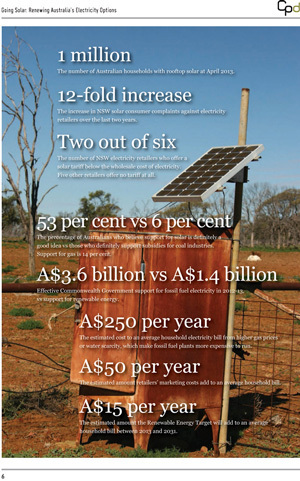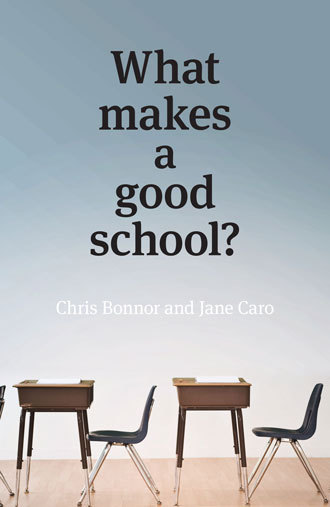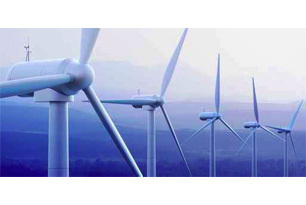Centre for Policy Development's Blog, page 72
May 2, 2013
PromiseWatch 2013: Newstart
Published in partnership with Crikey, the PromiseWatch 2013 series captures snapshots of the major parties’ platforms in major policy areas
The 11th-hour intervention yesterday of 50 prominent Australians to force the Prime Minister to increase the Newstart allowance in Tuesday week’s federal budget shows that while the national disability insurance scheme dominates the headlines, the related fate of the 13% of Australians living in poverty is unlikely to be forgotten.
Newstart has fast becoming a festering sore for the government, as critics from across the political spectrum line up to demand a rise in the base rate from a lowly $35 a day. The Australian Council of Social Services have even suggested the dole in Australia has become a human rights issue, marshaling international forces to attack the government over its apparent tightfistedness.
Newstart has also been under the spotlight following the Gillard government’s decision in January to switch recipients of Centrelink’s single-parent payment to the Newstart Allowance, and the subsequent introduction of a private members bill to reverse the changes by Greens Senator Rachel Siewert.
In concrete terms, Labor withdrew the more generous parenting payment from 84,000 Australians when their youngest child turns eight. The move drew scorn and condemnation from both the party’s Left faction and the Greens, who said the government was exploiting community hostility towards single mothers to paper over collapses in revenue. Overnight, some of these parents, in the immortal words of Melbourne indie rock quartet Dick Diver, literally found themselves on “Newstart again”.
The Greens’ bill sought to increase Newstart and Youth Allowance by $50 per week. Under the existing policy the maximum amount you can receive under Newstart is $663.70 per fortnight, with the majority of payments equaling $533 per fortnight, or approximately $35 per day.
To be eligible for the Newstart Allowance you must be over the age of 22, under the age of pension eligibility, and unemployed but actively seeking employment. You also need to enter into an employment pathway plan (EPP) with an employment services provider and Human Services. The EPP is a legal document that specifies the services that one is entitled to receive, and refusal to sign can result in a denial of paid income support.
Payments are reduced if the recipient earns more than $62 per fortnight before tax. Additional earnings of between $62 and $250 reduces the allowance by 50 cents on the dollar, and any income of over $250 will reduce the allowance by 60 cents on the dollar.
At its current rate, those living on the Newstart Allowance are below the poverty line, as defined as 50% of median disposable income. The current poverty line in Australia is $358 per week for a single person and $573 per single parent (ACOSS, 2012). The corresponding benefit rates under Newstart per week equal $256.30 for a single person and $266.50 for a single parent. By comparison, the disability pension is $375 a week, and the minimum wage is $590.
A boost to the Newstart payment has support across the political spectrum — conservative economists say it condemns recipients to a life of desperation and depression, while the welfare sector is united in its support for a substantial rise. Business Council of Australia president Tony Shepherd called for a jump during his recent National Press Club address, and progressives have noted the Newstart base payment has not increased in real terms since the Keating government in 1994.
Supporters of the status quo point out that Newstart is not meant to be a long-term solution to unemployment, with some viewing it as more “a short-term payment between jobs”. Its rate is meant to encourage recipients to move quickly from the dole to paid employment.
So where do the major parties officially stand on the dole? Check out the CPD policy snapshot on Crikey
May 1, 2013
PromiseWatch 2013: Climate change
Published in partnership with Crikey, the PromiseWatch 2013 series captures snapshots of the major parties’ platforms in major policy areas
Nearly six years ago, in the heady days of August 2007, former prime minister Kevin Rudd famously called climate change “the great moral challenge of our generation”. That was arguably the high-water mark for political promises on climate change. As the 2010 election drew closer, Rudd’s Carbon Pollution Reduction Scheme, informed by the Garnaut Review, was shelved under unrelenting cabinet pressure from Treasurer Wayne Swan and Julia Gillard.
Then, in the aftermath of Gillard’s narrow election win and with minority Greens demanding a chop out, the PM rolled back her “no carbon tax” pledge, deciding instead to introduce a fixed carbon price of $23 a tonne — a move that looks likely to be dumped after a Coalition victory in September.
The transitional tax levied on the 294 major polluters began on July 1 last year. According to the Clean Energy Regulator — the bureaucracy created to oversee the implementation of the eventual emissions trading scheme — this policy will ultimately effect 60% of the country’s carbon emissions and will include emissions resulting from “electricity generation, stationary energy, landfills, wastewater, industrial processes and fugitive emissions”. It’s difficult to tell at this early stage how successful the tax has been in reducing emissions — emissions are certainly not increasing, but falling demand for electricity (largely unrelated to the carbon price) is a key part of that.
The scientific consensus on carbon is having to kick hard against harsh economic realities. The European carbon market — which under the Australian government’s plan will link to the floating carbon price from 2015 — is in freefall, and German power prices are back, unbelievably, at 2007 levels. US President Barack Obama’s promise to focus on carbon has faded in the aftermath of the global financial crisis, although he has made renewed promises since winning a second term.
But the existential threat to civilisation remains severe. In order to combat this threat, both the government and opposition have committed Australia to reducing emissions by at least 5% of the year 2000’s levels by 2020, with Labor promising a cut of 80% on 2000’s level by 2050. The government intends to reduce each individual Australian’s carbon footprint by one-third to one-half. The carbon pricing scheme makes up only one part of this plan, but it is predicted to reduce carbon emissions by 159 million tonnes per year by 2020, which is roughly equivalent to removing 45 million cars from the roads.
So what are the differences between the parties on climate change? CPD’s John Wiseman has summarised the differences in this handy table…
April 29, 2013
PromiseWatch 2013: Disability
Published in partnership with Crikey, the PromiseWatch 2013 series captures snapshots of the major parties’ platforms in major policy areas
With Australia in meltdown at the prospect of a $12 billion budget black hole (or not so much, if you believe the saner heads at the International Monetary Fund), the Gillard government is said to be mulling a “levy” to fund the bipartisan $15 billion National Disability Insurance Scheme, a key election promise that passed the House of Representatives and the Senate in March.
According to reports in News Limited papers today, a “Medi-Grab” is on the cards to raise cash for the popular program, via a 0.5-percentage-point increase in the Medicare Levy from 1.5% to 2% — equating to a “$300” impost on the average household. It’s necessary because the NDIS will involve a doubling in the current patchwork of disability funding that leads to tens of thousands of people falling through gaps and consigns loving carers to a life of stress and misery.
The NDIS, proposed by the Productivity Commission in its landmark August 2011 report, is designed to work in three main ways: by “providing [no fault] insurance against the risk of acquiring significant disability, promoting opportunities for people with a disability and creating awareness of the issues that affect people with a disability, providing information and referral services and funding individualised supports”.
Currently people with similar disabilities access starkly different support services, depending on their location, age and timing —what some call the “lottery” of access to services. Carers, often family members, devote their whole lives to looking after a sibling, son or daughter. The NDIS is eventually expected to cover 410,000 Australians and, beginning in July, “launch sites” across four states will draw in 26,000 people, with the trials moving to the ACT next year.
Although enjoying universal support, concrete funding for the scheme has remained in flux as state government pledges have failed to match federal government expectations.
The Commonwealth has guaranteed $1 billion in funding over the next four years for the first phase but expects state governments to make up the shortfall. Queensland Premier Campbell Newman has offered $900 million over five years but Prime Minister Julia Gillard claimed that offer fell shortby over $200 million and would result in the federal government shouldering over half the bill, as it already will in New South Wales. Last week, South Australia revealed it had yet to sort through the financials even though it too had committed to the scheme’s “full implementation”. Victoria is yet to lock in to the full rollout beyond the initial trial in the Barwon region, while WA Premier Colin Barnett wants more local control before he puts pen to paper.
The related flashpoint is timing — disability advocates have been scathing over the yawning five-year delay between the this year’s trial and the full rollout in July 2018 (in NSW), at least two elections away. They say governments could immediately fund the NDIS if there were enough political will to prise open the purse strings. Here are the parties’ main commitments, informed by exclusive research undertaken by the CPD.
Read on at Crikey.com.au
Going solar: renewing Australia’s electricity options | LANDMARK REPORT
 Recent debates around electricity prices and renewable energy policy have largely ignored the rapid drop in solar technology costs, and the cost and risks associated with ‘business as usual’.
Recent debates around electricity prices and renewable energy policy have largely ignored the rapid drop in solar technology costs, and the cost and risks associated with ‘business as usual’.Going solar is the first economic assessment of future electricity price shocks if fossil fuels continue to dominate. The report takes a close look at Australia’s electricity price security and singles out rising gas prices and more frequent droughts as key risks. Prices for gas-fired electricity are now linked to volatile international fuel prices. Water scarcity reduces supply from water-cooled coal plants, pushing up wholesale electricity prices.
Embracing the shift to renewable energy – a line supported by trends in the USA and China – can reduce vulnerability to electricity price shocks and energy insecurity. Rising popularity and rapidly falling costs put rooftop solar at the leading edge of this change, threatening traditional electricity business models. Without stable policies to support renewable energy, Australians risk future bill shocks of up to $250 a year for the average household, plus supply interruptions. Yet effective support for fossil fuel electricity was $3.6 billion in 2012-13, more than double the support given to renewable energy.
Going solar looks at the key role rooftop solar will play in our future electricity system, and makes a series of practical policy recommendations to maximise the benefits of rooftop solar while minimising the cost of integrating it into the electricity system.
Download Going solar - media release
Download Going solar: renewing Australia’s electricity options report
Change can happen faster than you think – help us seize the moment and point to the alternatives. Add your voice to ours!
April 28, 2013
PromiseWatch 2013: Education
Published in partnership with Crikey, the PromiseWatch 2013 series captures snapshots of the major parties’ platforms in major policy areas

By CPD Researcher Julia Hosking and Crikey Senior Journalist Andrew Crook
The problem with the Gonski Review into education, Kevin Rudd told his former speechwriter in March, was that the vast majority of voters had no idea what “Gonski” means. In the manner of modern Labor governments, a commitment to increased funding for education — which has the support of three-quarters of the Australian population — had somehow become swaddled in the language of the “independent review” necessary to justify it.
Nevertheless, today the Prime Minister will announce her intention to plough forward with the government’s promises on Gonski, worth an extra $14.5 billion in federal and state funding, despite a $12 billion collapse in revenue since MYEFO.
Earlier this year, Crikey began to track Coalition, Labor and Greens promises. Now, with the aid of exclusive research compiled for Crikey by theCentre for Policy Development, we’ll track promises across policy areas, starting today with education. What have the two major parties, and the Greens, actually pledged on schools and universities?
April 15, 2013
Pushing our luck | Election 2013 | UPCOMING BOOK
 CPD’s gift to the voting public in 2013…
CPD’s gift to the voting public in 2013…As we learned through our More than luck book project in 2010, election campaigns can be the best and the worst of times for progressive ideas. Politicians are on the hunt for vote-winning offerings, but are tempted to opt for cheap stopgaps in the absence of enough revenue to pay for more substantial changes. Journalists pay close attention to policy announcements, but tend to report more on the politics than the substance.
From climate change and sustainability to proper governance and strengthening our democracy, the ideas in More than luck come at the right time. – The Hon Julian Burnside QC
CPD is launching ideas that combine conscience, intellect and survival smarts. May they breed and multiply. Australia needs CPD now more than ever. – Denis Moriarty, Managing Director, Our Community
 This year CPD will provide some much-needed oxygen to ideas that are often neglected because they have long-term benefits but short-term costs, because they are opposed by powerful vested interests, or because they’re just too complex to squeeze into a 30-second sound bite. We will also keep a watchful eye on policy offerings from the major parties, and on the evidence underpinning them – think of the ‘army of fact-checkers’ who played such a crucial role in the United States’ 2012 election.
This year CPD will provide some much-needed oxygen to ideas that are often neglected because they have long-term benefits but short-term costs, because they are opposed by powerful vested interests, or because they’re just too complex to squeeze into a 30-second sound bite. We will also keep a watchful eye on policy offerings from the major parties, and on the evidence underpinning them – think of the ‘army of fact-checkers’ who played such a crucial role in the United States’ 2012 election.
As part of our plan to give good ideas a fair hearing in an increasingly superficial and skewed media landscape, CPD will publish a book. Edited by Miriam Lyons and titled Pushing our luck will speak to the hopes and fears of Australians who know that the political choices they face are about much more important things than the narrow set of slogans and issues that dominate election campaigns. It will provide long term, evidence-based ideas for making the most of Australia’s strengths and facing up to our weaknesses.
Watch this space for updates – a full list of chapters and authors will be available from May 2013.
Short-term thinking cannot address Australia’s long-term dilemmas. [image error]
DONATE NOW to help CPD publish Pushing our luck and inject better ideas into the debate
April 14, 2013
The Gonski Report – Yes or No? | Sydney, 16 April 2013
 Weekly Seminar at The Sydney Institute
Weekly Seminar at The Sydney InstituteWhen: 5:30pm, 16 April 2013
Where: Clayton Utz Seminar Room, Level 13, 1 Bligh St, Sydney NSW 200o
The Sydney Institute is hosting a seminar and discussion on the Gonski Report, with speakers Kevin Donnelly and Jane Caro.
Jane is co-author with CPD fellow Chris Bonnor AM, of The stupid country, What makes a good school and the schools education chapter of CPD’s forthcoming election 2013 book, Pushing our luck.
Access information on how to attend from The Sydney Institute
Post Carbon Pathways 2013 report | DISCUSSION PAPER
 Post Carbon Pathways: Creating a just and resilient post carbon future
Post Carbon Pathways: Creating a just and resilient post carbon future
This report by John Wiseman,Taegen Edwards, and Kate Luckins draws on in-depth interviews with leading international researchers, policy makers and activists on actions needed to drive the rapid implementation of large scale post carbon economy transition strategies.
As the probability and risks of runaway climate change continue to grow, so too does the urgency of a swift transition to a just and resilient post-carbon future.1 The Post Carbon Pathways project aims to help meet this challenge by strengthening understanding of i) key elements of the most promising and innovative large-scale de-carbonisation strategies; and ii) the most effective ways of overcoming barriers to the rapid implementation of these strategies.
The report will be launched with a panel discussion at Melbourne University on 15 April 2013: cpd.org.au/2013/02/post-carbon-pathways-report-launch-melbourne-15-april/
Download Post Carbon Pathways 2013 report | Access the Melbourne Sustainable Society Institute website
April 10, 2013
Sky News, The Nation & Radio National, Outsiders | April 2013
 Miriam Lyons joins discussion on The Nation
Miriam Lyons joins discussion on The Nation David Speers heads up talks on current political issues including foreign policy, superannuation, carbon tax and 457 Visas, with insights from the think tank’s Executive Director.
Watch the first part of the discussion.
Miriam Lyons on RadioNational’s Outsiders
Miriam answers questions and discusses superannuation, tax breaks, changes to policy, the recent Institute for Public Affairs gala and media power in democracy.
Sky News The Nation & Radio National Outsiders | April 2013
 Miriam Lyons joins discussion on The Nation
Miriam Lyons joins discussion on The Nation David Speers heads up talks on current political issues including foreign policy, superannuation, carbon tax and 457 Visas, with insights from the think tank’s Executive Director.
Watch the first part of the discussion.
Miriam Lyons on RadioNational’s Outsiders
Miriam answers questions and discusses superannuation, tax breaks, changes to policy, the recent Institute for Public Affairs gala and media power in democracy.
Centre for Policy Development's Blog
- Centre for Policy Development's profile
- 1 follower






